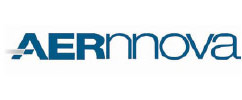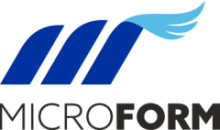Photo: Chelsea L
The Hybrid Laminar Flow Control (HLFC) concept is based on suctioning air through microperforated skin which generates an enlargement of laminar flow regime in the leading edge of aircraft structures (wings, tail, etc.) reducing fuel consumption. It is estimated that the implementation of this concept in large passenger aircrafts (e.g. Airbus A330-200) can contribute to a reduction of more than 10% in fuel consumption. Therefore, successful development of HLFC will greatly contribute to develop greener aircrafts and reduce the CO2 footprint and air pollutant emissions of air traffic which is expected to double in the next 15 years reaching more than 8 billion passengers in 2037.

Titanium alloys are being investigated for the manufacturing of microperforated skin of aircraft structures due to their excellent mechanical properties, strength-to-density ratio and outstanding corrosion resistance. Considering real scale structures, the successful forming of microperforated Titanium skin meeting the required quality and dimensional tolerance specifications is a challenging task due to the big size, high curvature on the leading edge, springback effect and oxidation issues. Moreover, variable microperforation entails a new challenge. The project will study stretch forming and hot forming technologies.

Photo: Courtesy of Sofitec
Forming of microperforated titanium demonstrators
Development of
- suitable forming process for the real-scale manufacturing of leading edge HLFC wing outer skins and
- supporting simulation tools to minimize initial process development costs of large structures composed by both constant and variable microperforation patterns meeting requested quality criteria and dimensional tolerances.
What is simulation for?
- To optimize forming cycle and tooling design considering springback phenomena in stretch forming.
- To optimize forming cycle considering stress relaxation phenomena and oxidation in hot forming.
- To determine suitable process window and optimum forming parameters (holding time, temperature, strain rate…) with minimum experimental work.
- To analyse the influence of the material properties (Ti Gr 2 versus Ti Gr 5, effect of microperforation density).
- To investigate influence of variable microperforation pattern in final part quality and process performance.
Demonstrators
Various demonstrators will be manufactured:
- Small-scale will include panels with critical curvature
- Large-scale will include up-scaled panels and Ground Base demonstrator.Small-scale demonstrators will be manufactured with both forming technologies, stretch and hot forming. Various large-scale demonstrators will be manufactured by stretch forming. The most promising technology will be selected for the manufacturing of the Ground Base demonstrator.

Reduce setup and forming process development costs of new parts by 30% by reducing the number of experimental trials, tooling design modifications and implementing “low cost” large tooling concepts.
Reduce forming process development times by 30% by reducing the number of experimental trials and tooling delivery times through the virtual optimization of process parameters (holding time, temperature, strain rate…) and simulation of springback and stress relaxation effects.
Become reference industrial key players in the manufacturing of future HLFC wing structures to support OEMs and TIER1 aero companies.
Develop forming technologies that will enable a reduction of 10% in fuel consumption in future LPA aircrafts thanks to the implementation of HLFC concept.
Reduce CO2 footprint by 10% and air pollutant emissions of future aircrafts.
MICROFORM project will have a relevant contribution to the FlightPath2050 environmental and industrial competitiveness goals.
The work plan is divided into 8 WPs – 2cross-cutting WPs (dedicated to Project Management and to Dissemination and Exploitation), and 6 technical WPs – with a duration of 32 months (from 1st May 2020 to 31st December 2022).
- WP1 is dedicated to the specifications related to the demonstrators and the forming processes, including the completion of experimental forming process optimisation.
- WP2 will address the characterization of the material (Ti Gr 2 and Ti Gr 5).
WP2 will be also focused on the development of FEM simulation tools for both stretch and hot forming processes.
- WP3 will address the manufacturing of small-scale demonstrators and the adjustment and validation of FEM simulation tool employing these geometries.
- WP4 will deal with the design and manufacturing of forming tools for large-scale demonstrators.
- WP5 will address the manufacturing of the large-scale demonstrators.
- WP6 will be focused on the techno-economic viability assessment for high-production rate.
- WP7. Project Management.
- WP8. Exploitation and Dissemination.
WP7. Project Management.

WP8. Exploitation and Dissemination.
MICROFORM project will be carried out by 4 partners from 2 different countries (Spain and Germany), with complementary skills and experience, covering the whole project value chain. The partners are referent entities in their fields at European level.





LORTEK is the project coordinator. LORTEK and HZG have previously worked with microperforated Titanium structures and both have experience with FEM simulation tools, so they will mainly contribute
to the definition of conditions and FEM analysis for stretch forming process in the case of LORTEK and hot forming process in the case of HZG.
SOFITEC will be in charge of demonstrator manufacturing by stretch forming, while FORMTECH will manufacture the demonstrators by hot forming. LORTEK will be responsible of exploitation and dissemination.
AERNNOVA is the Topic Manager and will steer the MICROFORM project included in the Large Passenger Aircraft (LPA) Programme of the Clean Sky2 Joint Undertaking.









